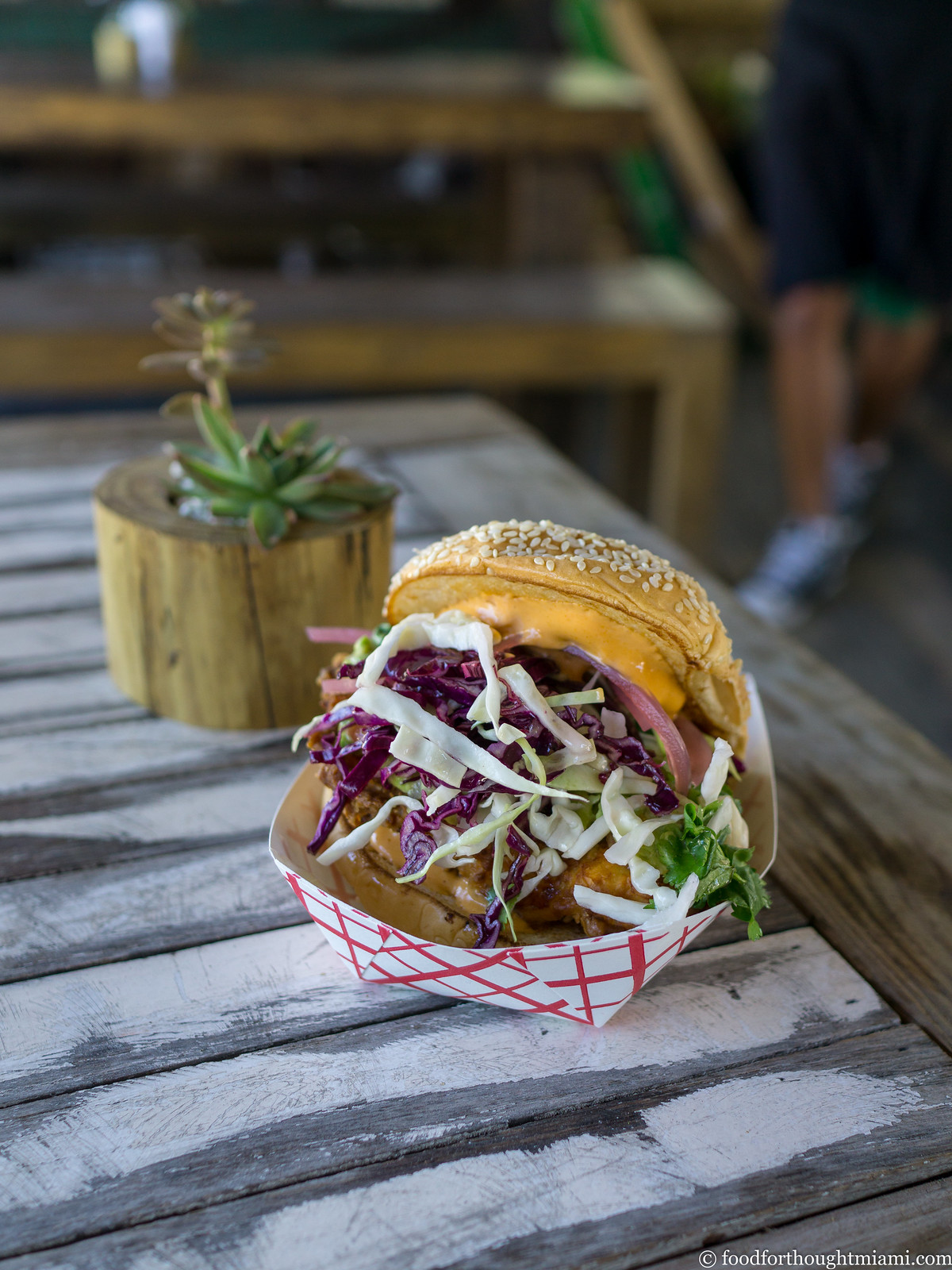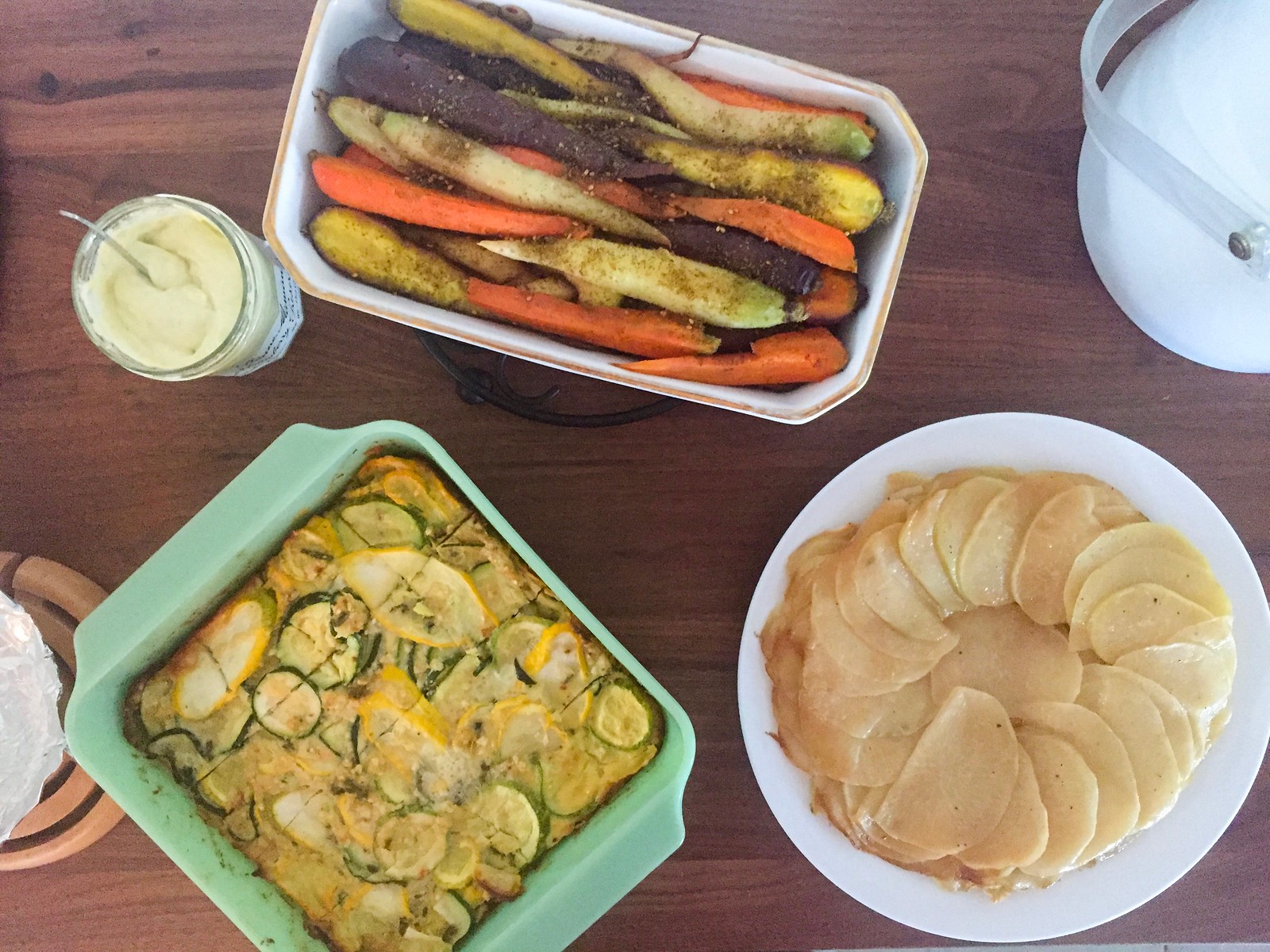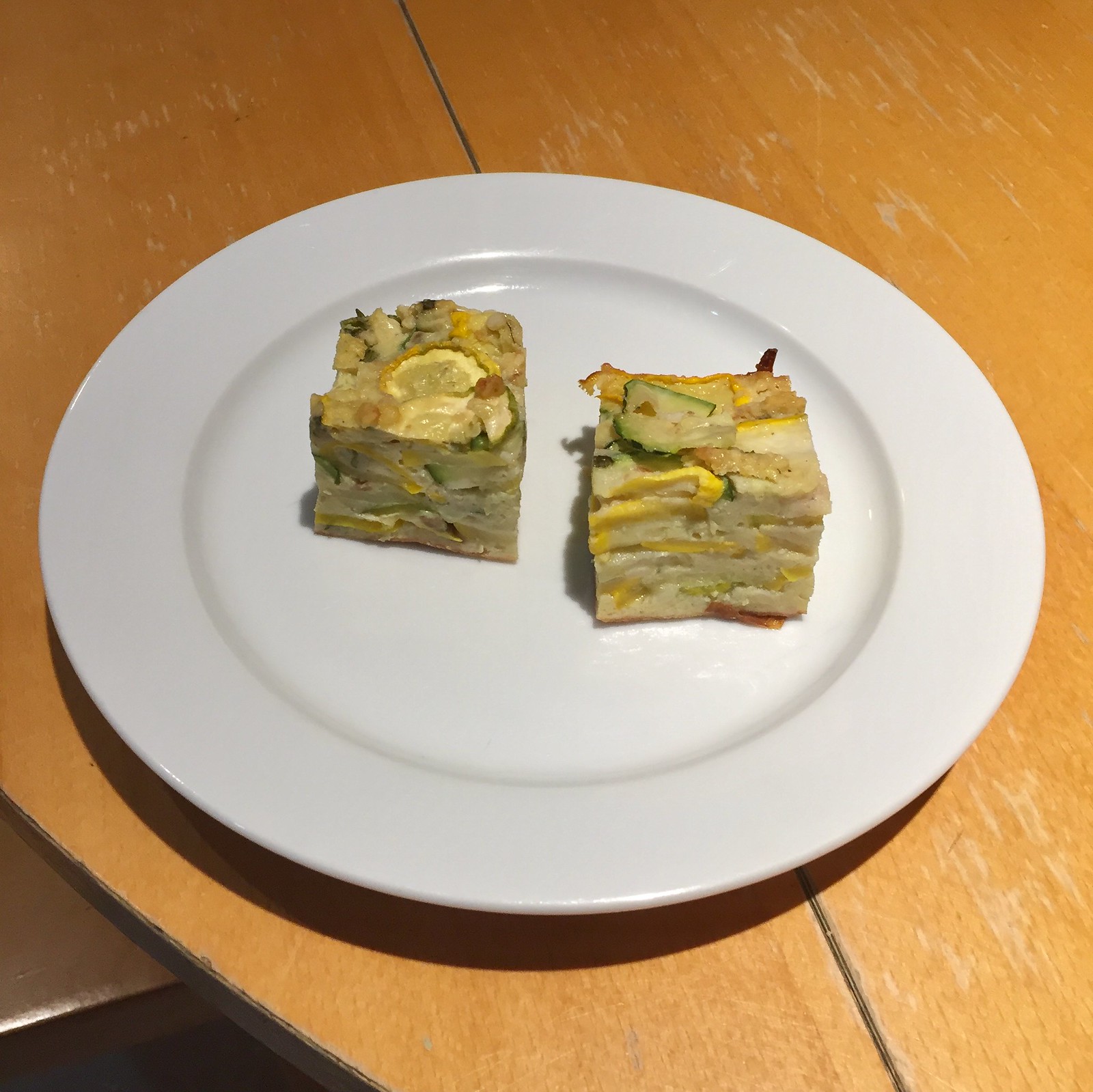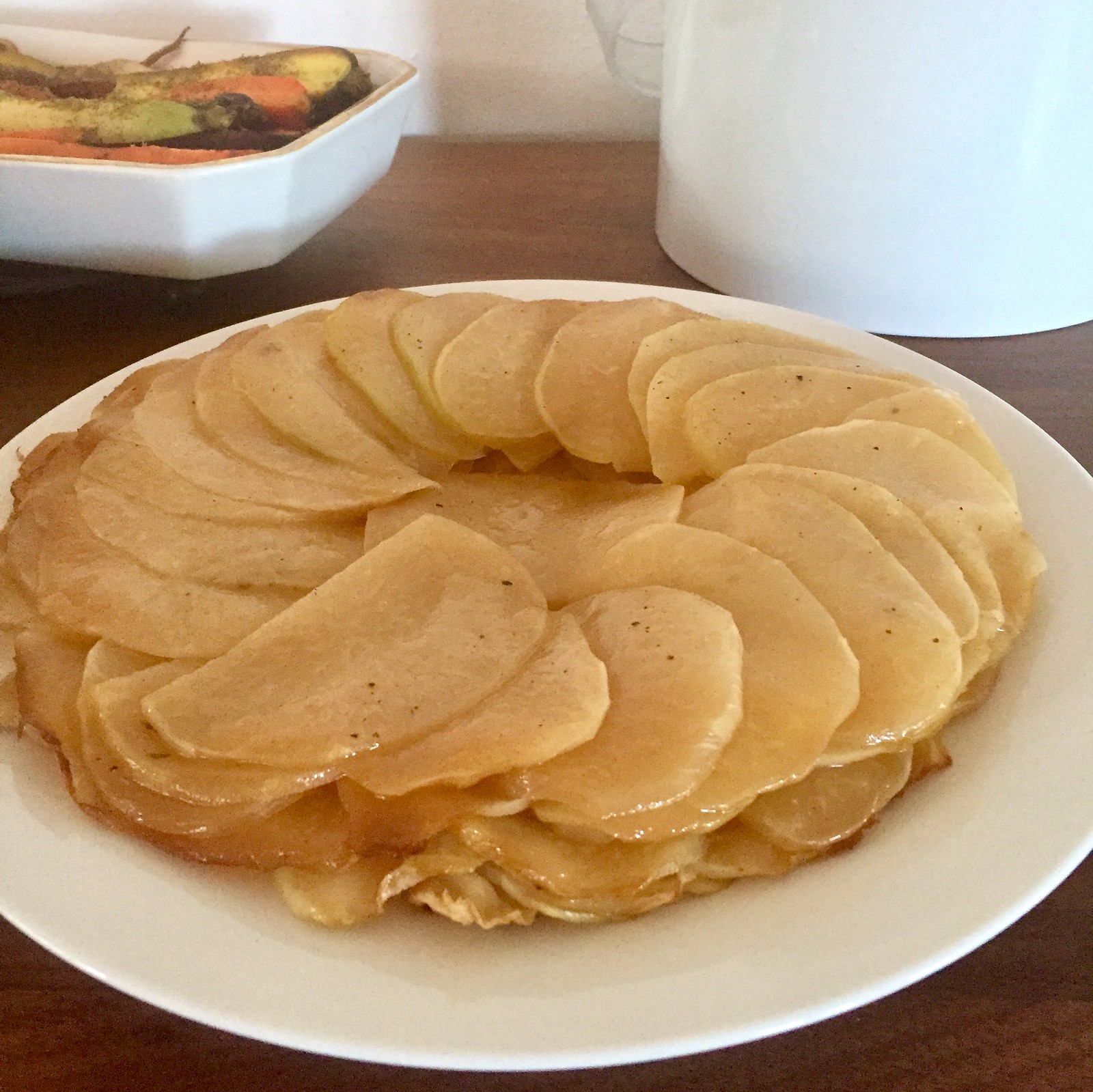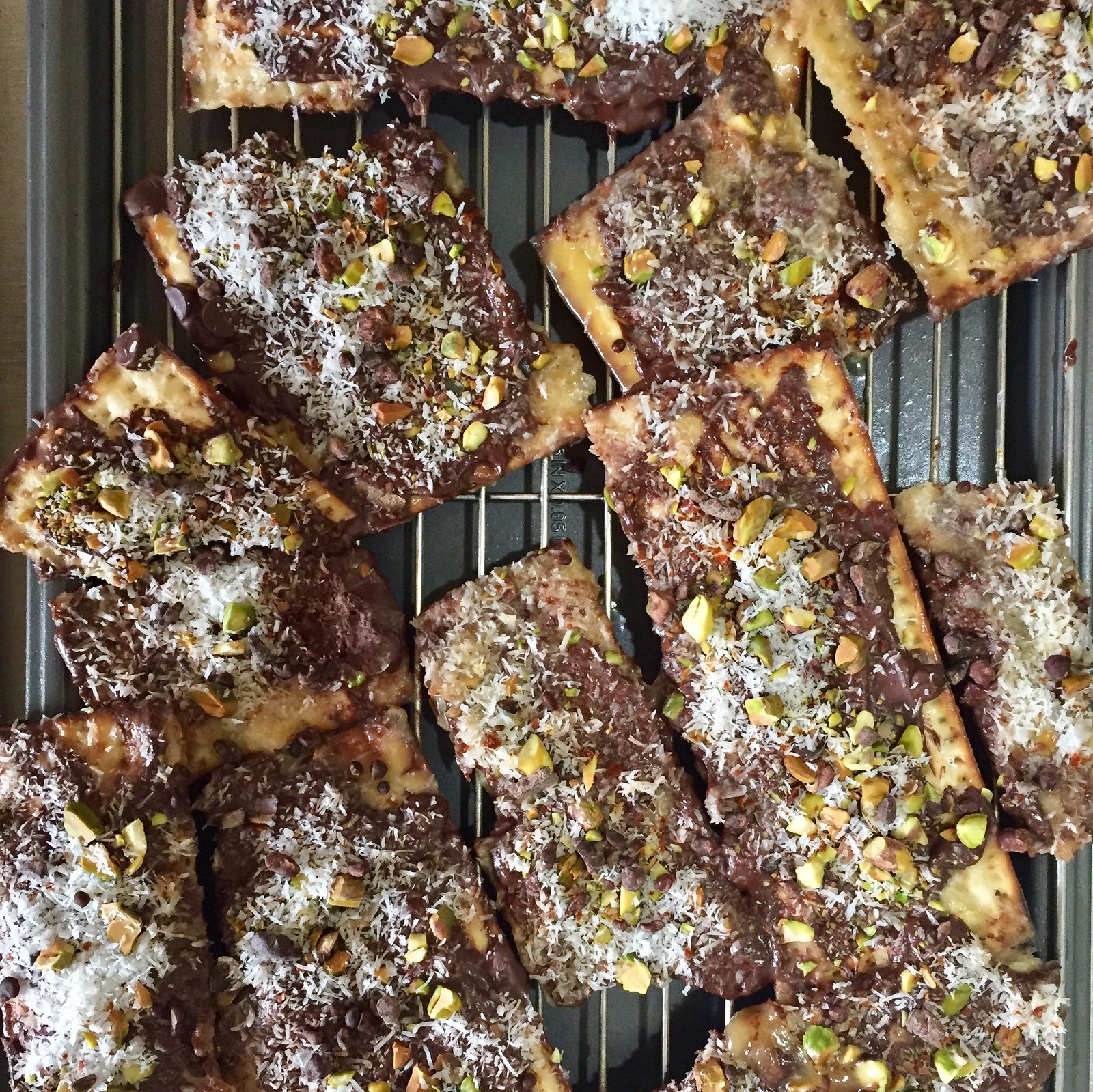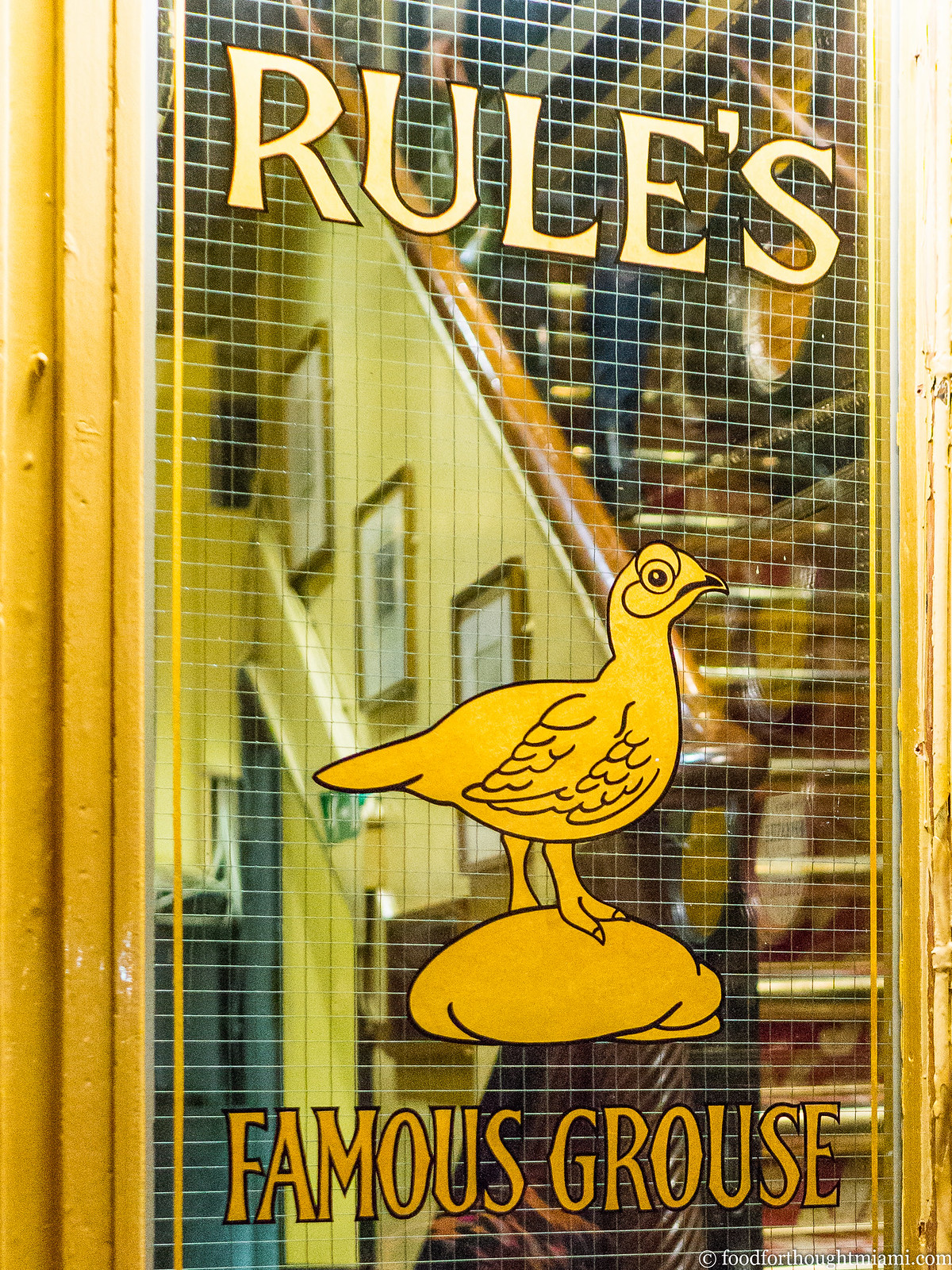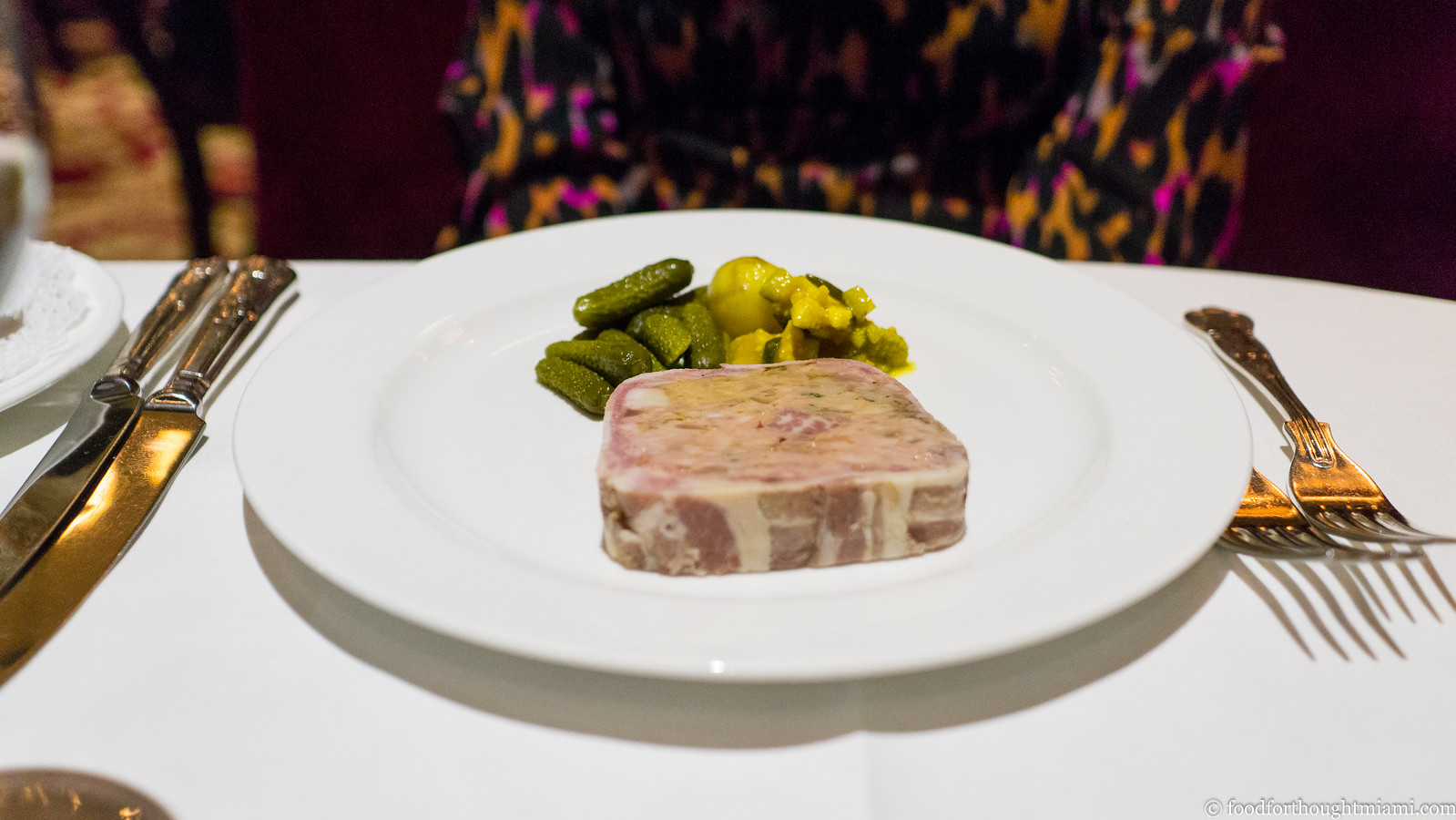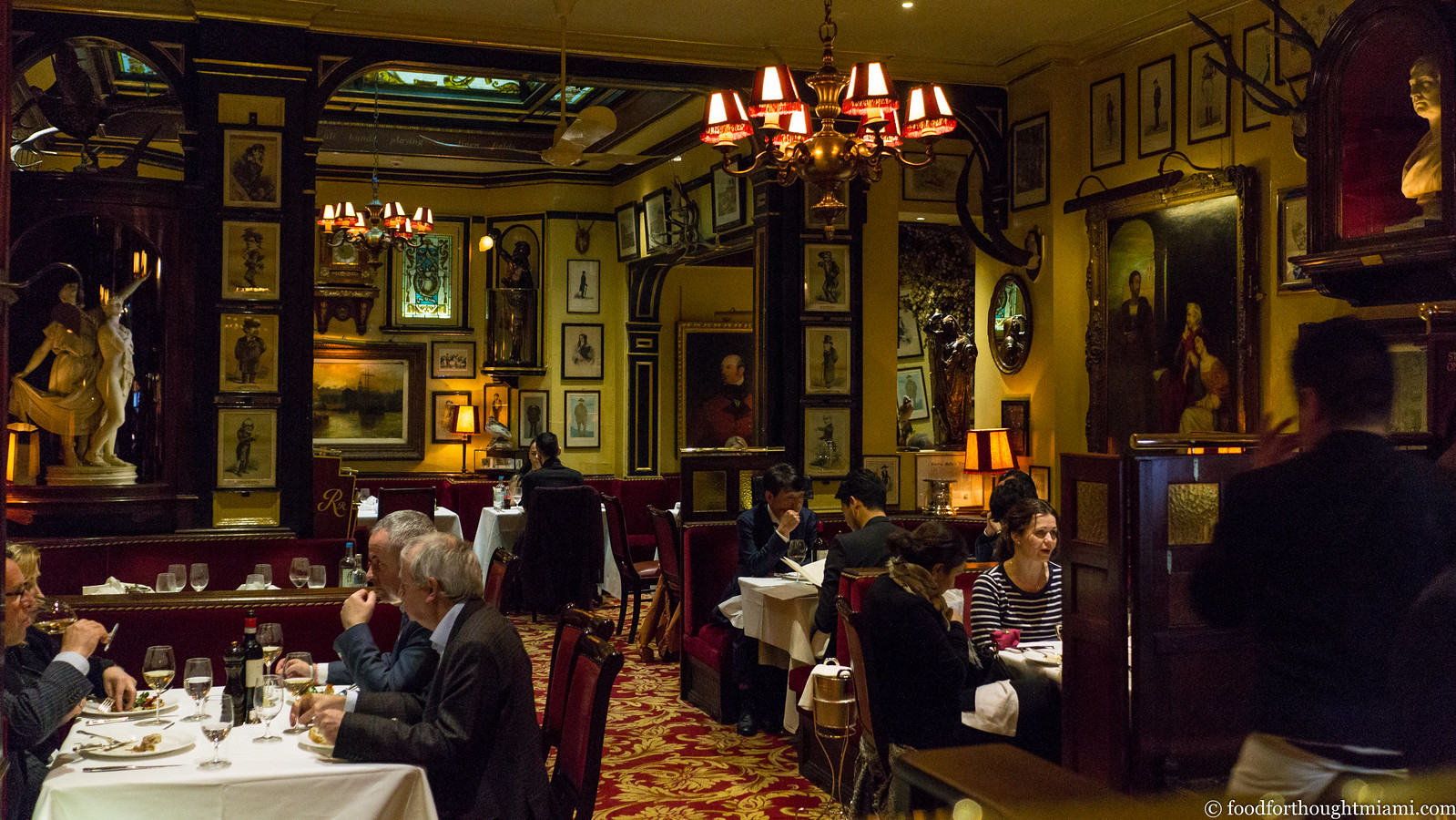Saturday, April 15, 2017
best thing i ate last week: fried chicken sandwich at La Pollita
There's yet another wave of taquerias opening in Miami these days, so many I've given up even trying to list them, much less sample them all. But last week I did stop in on La Pollita, which is currently operating from a trailer parked in the Midtown Garden Center. The backstory is intriguing: chefs Luciana Giangrandi and Alex Meyer worked at some pretty highfalutin places before this: Eleven Madison Park (just named as "World's Best Restaurant" by the suspect but influential 50 Best list), its sibling the NoMad, Scarpetta in Manhattan, Animal in L.A. Which made me wonder – what are these folks doing running a taco truck?
Making really great food, it turns out. They've got a short list of tacos, served on fresh tortillas pressed from masa supplied by Miami masa maestro Steve Santana (of Taquiza), and the cochinita pibil I tried was very good. But the standout item was the fried chicken cemita. A hot, crispy, juicy tranche of fried chicken. A crunchy, vinegar-laced, herb-flecked cabbage slaw. A dollop of mashed avocado for some richness. A creamy, mildly spicy Valentina aioli. A sesame-seed flecked bun with just the right heft: substantial enough to be a meaningful component of the sandwich composition and to keep everything together until the last bite; but not so much as to overwhelm the stars of the show. It is just about perfect, and was the best thing I ate last week.
(You can see some more pictures in this La Pollita - Miami flickr set).
The mantra at EMP is "Make It Nice." The alumni running La Pollita learned it well.
La Pollita
2600 NE 2nd Avenue, Miami, Florida
310.435.7766
Thursday, April 13, 2017
A Very CSA Seder
Passover is something of a culinary challenge: the whole prohibition on leavened grains can be pretty limiting, especially when it comes to dessert, and there are certain things that are expected: the matzo ball soup, the gefilte fish, the brisket, the tzimmes. I wanted to be respectful of tradition without being completely straitjacketed by it – let’s be honest, some of those old-timey dishes are better than others (for further reading: Charlotte Druckman, “Can You Update a Passover Menu and Still Satisfy Traditionalists?,” which was a source of much of the inspiration for my menu, though not any of the actual dishes). Also, I had a stockpile of CSA vegetables gathering in the refrigerator bin, and at least one vegetarian joining us for dinner.
So here’s what I came up with, and where applicable, where my recipes came from, with a few I made up myself:
(You can see all my pictures in this Passover Home Cooking flickr set).
To Nosh:
Beet Pickled Eggs - you’ll find a multitude of recipes for these online and elsewhere - my starting point was this Michael Solomonov recipe. I happened to already have a bunch of beet pickling liquid from some fairly ancient brined beets I made using the Bar Tartine recipe,[1] so I used that as my base, diluting it with some water, reinforcing it with some white vinegar, and sweetening it with some sugar. I stuffed a dozen cooled, peeled hard-boiled eggs into a couple big jars and covered them with the beet liquid, then let them sit for two days in the fridge.
I was expecting our crowd to be skeptical of these – actually, I thought I'd be eating leftover pink egg salad sandwiches for the next week – but they were a big hit. The colors – sunny yellow yolk bordered by a ribbon of white fading into magenta exterior – are really striking, and the flavor has just enough pickle-y kick to let you know it’s there without being overwhelming. These are super easy, beautiful, and a crowd-pleaser.
Chopped Liver - when I was growing up, my grandmother – and then my mom – used to serve chopped chicken liver molded into the shape of a bird. Then everyone stopped eating chopped liver, which came to be regarded as deadly. I think it may be getting a bad rap. Yes, chicken livers, like many organ meats, are high in cholesterol, but they’re relatively low in fat and high in nutrients. Yes, you add some schmaltz, but you don’t need a ton. I followed this recipe from Russ & Daughters, subbing duck fat for chicken schmaltz because we were saving our schmaltz for the matzo balls. It says the yield is 8-10 servings, but you can probably comfortably serve this much to a group of twelve because there's going to be four people who don't eat liver. Besides, because it’s so rich and intense, you don’t need to eat all that much – just a couple shmears on some matzo, and you’ll be happy and fortified. I say “Bring Back Chopped Liver!”
Smoked Mackerel Dip - Unlike some people, I actually like gefilte fish, but sorry, I’m not going to make it from scratch. We happened to have some smoked mackerel fillets in a drawer of the fridge, so I figured - why not make a fish dip instead? I only stumbled across Felicity Cloake’s “How to Make the Perfect …” column in The Guardian by googling “smoked mackerel dip,” but appreciated the trial-and-error methodology of trying out multiple recipes and taking the best of each of them. It turned out quite nice, though I perked it up with supplemental additions of fresh horseradish, lemon and dill just before serving.[2]
Traditional:
Matzo Ball Soup - This was Mrs. F’s domain. I tried to pass along helpful tips via Serious Eats for getting your balls to be sinkers or floaters or somewhere in between, but she had no interest. I did well to just leave her alone. Her broth was golden and clear and deeply chicken-y; her matzo balls were just substantial enough to let you feel their presence, but light and fluffy rather than leaden.
Chicken Marbella - Here I thought I was some kind of genius for suggesting we do Chicken Marbella for Passover dinner. Turns out that the Silver Palate Cookbook staple also has a long and well-established history on the Seder table.
Brisket - My mom makes the best brisket. Just saying. One day I'll pass along her secrets.
Not So Traditional:
Summer Squash Kugel - I’d accumulated an assortment of zucchini and summer squashes from CSA the past couple weeks, which nobody else in my family will eat. So I figured, I may as well unload them on my guests. But how? I hatched my plan: a kugel.
Kugels are usually stodgy, dense side dishes of potato or noodles bound with egg. The traditional style is pretty heavy and, let's be honest here, pretty bland. But maybe they didn’t have to be that way. Via the almighty google, I found inspiration in this Spring Zucchini Kugel recipe. The result was exactly what I was looking for: lots of layers of vegetables, bound but not weighted down by the eggs – almost like a very veg-intensive frittata or strata. And the lemon zest and mint really brighten up the flavors. Here’s how I did it:
Recipe:
4 lbs zucchini, summer squash or both
2 tbsp olive oil
4 eggs
½ cup matzo meal
1 tbsp lemon zest
2 tbsp mint, chiffonade
Salt and pepper to taste
Preheat oven to 400°.
Thinly slice the squash crosswise (a mandolin might be too thin, you want them to have just a little substance), toss in a large bowl with 1 tbsp olive oil and salt, and then lay out in a single layer on a sheet pan and roast at 400° for about 5-10 minutes. I didn't want to brown them so much as just to soften them and get some of the liquid out. You might need to use multiple sheet pans or do them in batches; a Silpat comes in handy. Remove to a colander and let them drain any additional moisture.
Reduce oven to 350°.
Crack the eggs into a large mixing bowl and stir until the white and yolk are blended. Add the cooked squash, sprinkle in ½ cup matzo meal, lemon zest, mint, and a good pinch of salt, and gently stir to blend (hands probably work best).
Coat the bottom and sides of a baking dish with the remaining olive oil, then gently dump the contents of the mixing bowl into the baking dish. Try to arrange the squash slices so they are laying flat rather than pointing up (most seem to settle into the right position on their own, and in any event, precision is not essential).
Bake at 350° for about 45-60 minutes, until browned on top and cooked through. Can be made in advance and reheated.
Kohlrabi Anna - Kohlrabi is arguably an even bigger CSA challenge than a load of zucchini. I actually love the odd vegetable, which looks kind of like an alien turnip, and tastes a lot like broccoli stems, but it can be a tough sell. I had an idea: Kohlrabi Anna. The classic Potatoes Anna involves thinly sliced potatoes layered with lots of butter and cooked in a pan until the outer surface is browned and crisp, and the potatoes are tender. I basically did the same thing, but with kohlrabi. I would have liked to have gotten a little more browning – I may have been too timid with the heat – but I really liked how this came out, the kohlrabi tender and nutty and sweet and suffused with butter. This also can be made ahead and reheated though it may lose whatever crunch it may have had.
Recipe:
4 kohlrabi
3 tbsp unsalted butter
2 tbsp fresh thyme
Salt
Preheat oven to 375°.
Peel and thinly slice the kohlrabi into rounds.
Melt 1 tbsp of butter and toss the kohlrabi with the butter, salt and 1 tbsp of thyme.
Rub bottom and sides of a 10" cast iron skillet with 1 tbsp butter.
Arrange kohlrabi slices in circles around the bottom of the skillet, shingling them and overlapping the edges. Dot each layer with butter, sprinkle with salt, and continue layering kohlrabi slices until they're all used up.
Put the skillet on a medium-high heat burner on the stove for 10-20 minutes to brown the bottom. Then move skillet to the oven and cook for another 30-40 minutes, until kohlrabi are tender.
Remove from oven, and when feeling sufficiently bold, put a plate or cutting board over the top of the skillet, then flip the plate/cutting board and skillet – the kohlrabi should come out in one piece, like a cake.[3] Garnish with more fresh thyme, cut into wedges, and serve.
Roasted Carrots with Za’atar and Green Harissa Aioli - Charlotte Druckman is right: tsimis is totally broken. Tsimis, or tzimmes, or tsimmes, no matter how you spell it, is usually pretty gross – an insipid, cloyingly sweet stew of carrots and dried fruit, often supplemented with other sugary vegetables like yams. There's no contrast in flavor (just sort of generically sweet) or texture (just sort of generically soft). I don't think anyone actually likes tzimmes.[4] I was not going to make a tzimmes.
Instead, I took a few different varieties of CSA carrots, halved the fat ones, tossed with some olive oil and salt, and roasted them (400° for about 20-30 minutes, until the biggest ones were just barely fork tender), then sprinkled them with za'atar spice, and served them with a green harissa aioli.
My inspiration came from the fact that dessert involved a meringue, and I had a whole bunch of egg yolks left over.[5] I saved one of them for a favorite kitchen trick: immersion blender aioli. The recipe I've linked to is on Serious Eats, but the first time I saw this done, it was by José Andrés. Kenji uses the stick blender for half the oil (the canola portion), and then blends the olive oil in by hand. This seems unnecessary to me – I dumped it in all at once, and it came out just lovely. For some real excitement, make it right in a jam jar that's barely large enough for all the ingredients. If you start with the immersion blender at the bottom of the jar, and slowly, gently move your way up, it perfectly emulsifies all the oil without any splatters, and no need to decant into another container.
Once the aioli is made, just stir in prepared green harissa – or any other flavoring you like – to taste. I used a couple tablespoons of this Mina Green Harissa, which I like quite a bit. I also cut back to just three garlic cloves in the aioli recipe, as I didn't want the garlic to be dominant. Not to set the bar too low, but this was better than tzimmes.
Bitter Greens with Horseradish Ranch - the traditional Seder plate includes bitter herbs – maror and chazeret – for which we now customarily use horseradish and romaine lettuce, respectively. I started thinking about how I could incorporate these flavors into a dish, and while staring at the latest bag of lettuces from my CSA, decided on a bitter greens salad with horseradish ranch dressing. Crunchy, peppery fresh radishes also seemed thematically appropriate. This is my go-to formula for a creamy salad dressing, which welcomes all manner of variations – different herbs, finely chopped chile peppers, a dash of hot sauce, some mashed avocado. No doubt it's a common formula, but I think I arrived at it by way of Andrew Carmellini's buttermilk dressing recipe in "American Flavor."
Recipe:
2 tbsp white wine vinegar
2 tbsp grated fresh horseradish
2 garlic cloves, minced
½ cup buttermilk
½ cup plain Greek yogurt
½ cup mayonnaise
2 tbsp Fresh dill, chopped
Juice of 1 lemon
Salt, to taste
1 big bag mixed salad greens, washed and dried
1 watermelon radish, thinly sliced
3 breakfast radishes, thinly sliced
3 hakurei turnips, thinly sliced
Add vinegar to mixing bowl. Add horseradish and garlic and steep for 5-30 minutes. Add buttermilk, yogurt, mayo, dill and stir until combined. Add lemon juice and salt to taste. Add radishes and turnips to salad greens,[6] and toss with dressing.
Dessert:
Walnut Chocolate Dacquoise - I am not a baker. Dessert is generally the least exciting part of a meal for me, and I'm even less enthusiastic about making them. But I've been watching lots of Great British Baking Show on Netflix lately, and it's boosted my confidence a bit. And besides, Passover desserts are already pretty terrible (no leavened flour), so how badly could I do?
For whatever reason, meringue is a little easier for me to wrap my head around than most desserts, so I settled on this variation on a dacquoise. We had a big bag of walnuts in the house, and Mrs. F likes walnuts, so I substituted them for the hazelnuts. It was actually pretty easy: toast and chop the nuts, whip the egg whites to soft peaks, add sugar and whip to stiff peaks, mix in vanilla and almond extracts, then fold in the chopped nuts, chocolate chips, and melted chocolate. Then you spread the mixture out into three circles on parchment paper[7] – as far as I'm concerned, they don't need to look perfect – and bake at 225° for 2 1/2 hours, then let them cool and dry out in the oven.
When you're ready for assembly, whip three cups of heavy cream with 1/4 cup confectioner's sugar until you have whipped cream; then spread a layer of whipped cream over one of the meringues, top with a second meringue, repeat, top with the third meringue, and repeat once more. I then stuck it in the freezer overnight, sliced it straight out of the freezer (some bits will break off; save the crumbs), then moved it to the fridge the morning of Seder dinner. Before serving, I sprinkled the top with chocolate shavings, crumbled toasted walnuts, and the pulverized crumbles of meringue that had broken off during slicing.
Folks: it was ridiculously good. The meringue was maybe a bit dense, but it had a good crunch and crumble, the flavor of the walnut and chocolate carried through, the whipped cream was an airy, fluffy contrast, and even if it kind of looks like it's falling apart around the edges, it sliced very nicely to show the alternating layers of meringue and cream. I may be stuck with Passover dessert duty now.
Chocolate Toffee Matzo - this was a recipe I pulled from Bon Appetit, and accomplishes the unique feat of making matzo actually taste good (though of course it's not the matzo, its' everything you put on top of it). The idea is you make a toffee from butter and sugar (with a pinch of Aleppo pepper), spread that on the matzo, bake it for about 10 minutes, then melt chocolate over the top in the residual heat, spread the chocolate, and sprinkle with pistachios, coconut flakes, cocoa nibs, flaky salt, and more Aleppo pepper. Great flavors here; the toffee component left something to be desired – whether because the instructions are flawed (I don't think a "simmer" gets the toffee thick enough) or my own failed execution, the toffee wasn't spreadable, and wound up more like a soak in a hot, sweet melted butter bath for the matzo. Sticking it in the freezer after it was fully assembled and cooled helped it firm up.
So we got to share the holiday with family and friends, we got to tell the story of Passover one more time, we drank wine and reclined, we used up a whole bunch of our CSA produce, and we discovered I can actually make a dessert. That was the fun part. Now comes the hard part – not eating bread for a week. Chag Sameach to all my fellow tribespeople, and as for the rest of you: please stop posting pictures of delectable baked goods for the next week.
[1] Oh my gosh - could these have been the same pickled beets I wrote about making two years ago? Maybe.
[2] While this menu is "kosher for Passover," it is not actually "kosher" – we’ve got both meat and milk all over the place at the same time. Hey, we each observe in our own ways.
[3] When you pull it from the oven, give the skillet a little shake to make sure the kohlrabi isn't sticking (if it is, I'm not sure how to help you). If you flip it onto a cutting board (I find this easier than a dish because the cutting board is flat), you can then slide it from the cutting board onto a serving dish.
[4] This is a big part of why Chicken Marbella makes so much sense as part of a Seder: you can offload all that sweet stuff into a meat dish where you at least get some contrast from the olives and capers and herbs.
[5] Pro tip: with the rest of the yolks, make a lemon or other citrus curd (I had blood oranges, and used this recipe as a starting point, but used five yolks instead of the three yolks and three whole eggs called for in the recipe, and cut the sugar back to 1/4 cup); then dollop spoonfuls of the curd on macaroons.
[6] The radishes can be sliced the day before and kept in ice water, they'll remain nice and crisp and this makes last-minute assembly easier.
[7] I actually made a piping bag from a Ziploc with a corner cut off, but my piping was, well, pretty inartful (let's just say I was reminded of walking the dogs) and so I then spread it out into circles using an offset spatula.
[2] While this menu is "kosher for Passover," it is not actually "kosher" – we’ve got both meat and milk all over the place at the same time. Hey, we each observe in our own ways.
[3] When you pull it from the oven, give the skillet a little shake to make sure the kohlrabi isn't sticking (if it is, I'm not sure how to help you). If you flip it onto a cutting board (I find this easier than a dish because the cutting board is flat), you can then slide it from the cutting board onto a serving dish.
[4] This is a big part of why Chicken Marbella makes so much sense as part of a Seder: you can offload all that sweet stuff into a meat dish where you at least get some contrast from the olives and capers and herbs.
[5] Pro tip: with the rest of the yolks, make a lemon or other citrus curd (I had blood oranges, and used this recipe as a starting point, but used five yolks instead of the three yolks and three whole eggs called for in the recipe, and cut the sugar back to 1/4 cup); then dollop spoonfuls of the curd on macaroons.
[6] The radishes can be sliced the day before and kept in ice water, they'll remain nice and crisp and this makes last-minute assembly easier.
[7] I actually made a piping bag from a Ziploc with a corner cut off, but my piping was, well, pretty inartful (let's just say I was reminded of walking the dogs) and so I then spread it out into circles using an offset spatula.
Monday, April 3, 2017
Rules Restaurant | London
Fergus Henderson may have helped convince the world that British food was worthy of attention with his restaurant, St. John (some more thoughts on St. John here). But at Rules, they were never in any doubt.
Rules bills itself as the oldest restaurant in London. Over the past two centuries, it's been owned by only three families: Thomas Rule opened it in 1798; just before World War I, one of his descendants decided to move to France, and arranged a swap with a Brit running a restaurant in Paris named Tom Bell; and then in 1984, Bell's daughter sold the restaurant to its current owner John Mayhew.
The dining room, with its red velvet-wrapped, gold-piped banquettes, polished wood dividers, oil portraits and old cartoons on the walls,[1] the occasional marble bust here and there, looks every bit the part. If not for the bona fides of its history, the stereotypically posh decorations would seem almost laughable. I adore the place.
We first came here on a family trip to London more than ten years ago. Our daughter was about six years old at the time; she did not adjust well to the jet lag, and within an hour she was sliding under the table.[2] This time around, I was the one who wanted to throw a fit when I learned that we had just missed game season. Through the present owner's inheritance of the Lartington Estate in northern England and relationships with local game dealers, Rules sometimes has a glorious assortment of wild things on the menu – its "famous grouse," but also woodcock, pheasant, partridge, wild duck, hare and more. Alas, not on this visit.
(You can see all my pictures in this Rules - London flickr set).
Before getting to the food, I highly recommend a visit upstairs to the Edward VII Room, a/k/a the cocktail bar, a snug spot with a carved wooden bar counter, a few tables and couches, and a fine assortment of hunting murals and trophies adorning the walls. The bar program is run by Mike Cook, and his crew can handily make the classics like a pitch-perfect Negroni. But they also have their own creations, like the intensely aromatic Lucia Sciarra, named after a character from the last James Bond film, Spectre.[3]
Once I'd recovered from having missed game season (my recovery aided by a pleasant cocktail), I focused my attention on the menu, which also helped ease my disappointment. You get the sense it could have been written a hundred years ago. Chef David Stafford shows occasional flashes of whimsy, like a duck leg "pastilla" paired with a spiced duck breast, but for the most part he proudly and lovingly cooks traditional British dishes. And this he does exceedingly well.
So there's potted shrimps, a mound of tiny, tender brown crustaceans caught in Morecambe Bay, preserved in butter and spices in the way it's been done for hundreds of years. There's Middlewhite pork terrine, which makes use of a rare heritage breed of pig that originated in Yorkshire, served simply with picallili and cornichons. The shrimp taste of shrimp, the pork tastes of pork, and I couldn't possibly be happier.
For her main, Mrs. F chooses the Uig Lodge smoked salmon, sourced from a smokery on the far northern reaches of the Outer Hebrides. The salmon is served with fat slabs of brown bread and offered either with or without scrambled eggs, but surely this is a rhetorical question? The salt and smoke on the fish whisper rather than shout, and its texture is all silk, matched by the soft, creamy eggs.
For me, a real taste of tradition: a steamed suet pudding. It arrives at the table completely unadorned, looking like a doorstop from a giant's castle. Cut it open, and beneath a layer of dense, chewy suet pastry, a stew of venison, red wine and chestnut mushrooms issues forth. There's nothing light or delicate here, but it has a brawny beauty all its own; it's rich, and hearty, and sticky, and satisfying, and I love that such things still exist in this world.
Along with our mains, we have some bronze-crested, buttery-interiored potatoes Anna, as well as a perky salad with sprightly pale sprigs of frisée, crispy bacon lardons, toasty croutons and a bracing shallot vinaigrette.[4]
We always enjoy ending a meal with some good cheeses, but Mrs. F is not so much a fan of the blue-veined varieties. So I'm pleased to hear that the cheese plate, which features a few English cheeses served with biscuits and a sweet shallot jam, can be supplemented with a portion of the Cropwell Bishop Stilton. The entire wheel is brought to the table, from which they will scoop the paste onto your plate until you say "enough!" Made by a third-generation creamery in Nottingham, it's more creamy than crumbly, tangy enough to balance the fat but not so much to blow out your sinuses, and just lovely stuff.
There's a certain danger in a place like this getting weighed down by its historical baggage, but Rules manages to avoid that. It doesn't feel, or taste, like a museum piece, but rather like a living, breathing restaurant that just happens to be from another century. But good food is timeless; I hope Rules remains so as well.
Rules Restaurant
35 Maiden Lane, Covent Garden, London, England
+44 0 20 7836 5314
[1] There's also a massive mural on one wall of a stern-faced Margaret Thatcher looking as if she belongs on the prow of a ship.
[2] She didn't actively misbehave. She just sort of ran out of steam, started to fade and get a little teary-eyed, and quietly mewled "I'm broken." We still say this when it gets a little too late in the evening for any of us.
[3] The concoction includes Star of Bombay Gin, Lillet Blanc, Benedictine, Gammel Dansk Bitter Dram, and a lemon twist. You can see Cook making one here. Delicious. You can also see Rules make a cameo appearance in a scene from Spectre which was shot at the restaurant. Rules has made many other literary appearances, including in novels by Evelyn Waugh and Graham Greene, among others. Speaking of things literary, I think it's just wonderful that the restaurant proudly republishes an absolutely scathing review by Kingsley Amis entitled "Where Disaster Rules," written sometime in the 1970's, on their website ("There are cheaper eating-places than Rules where the atmosphere and service are so pleasant that they drive out other impressions. Far from the case here; but then I find it hard to imagine an establishment Elysian enough to dispel the memory of two of the most disgusting full-dress meals I have ever tried to eat in my life.")
[4] We also drink a really nice wine, the 2010 Rossignol-Fevrier "Robardelle," a premier cru vineyard in Volnay from a producer which I don't think gets distributed in the U.S. Happily, the wine list at Rules mostly shares my predilections for Burgundies, Rhones, and sub-$100 wines.
[2] She didn't actively misbehave. She just sort of ran out of steam, started to fade and get a little teary-eyed, and quietly mewled "I'm broken." We still say this when it gets a little too late in the evening for any of us.
[3] The concoction includes Star of Bombay Gin, Lillet Blanc, Benedictine, Gammel Dansk Bitter Dram, and a lemon twist. You can see Cook making one here. Delicious. You can also see Rules make a cameo appearance in a scene from Spectre which was shot at the restaurant. Rules has made many other literary appearances, including in novels by Evelyn Waugh and Graham Greene, among others. Speaking of things literary, I think it's just wonderful that the restaurant proudly republishes an absolutely scathing review by Kingsley Amis entitled "Where Disaster Rules," written sometime in the 1970's, on their website ("There are cheaper eating-places than Rules where the atmosphere and service are so pleasant that they drive out other impressions. Far from the case here; but then I find it hard to imagine an establishment Elysian enough to dispel the memory of two of the most disgusting full-dress meals I have ever tried to eat in my life.")
[4] We also drink a really nice wine, the 2010 Rossignol-Fevrier "Robardelle," a premier cru vineyard in Volnay from a producer which I don't think gets distributed in the U.S. Happily, the wine list at Rules mostly shares my predilections for Burgundies, Rhones, and sub-$100 wines.
Subscribe to:
Posts (Atom)

